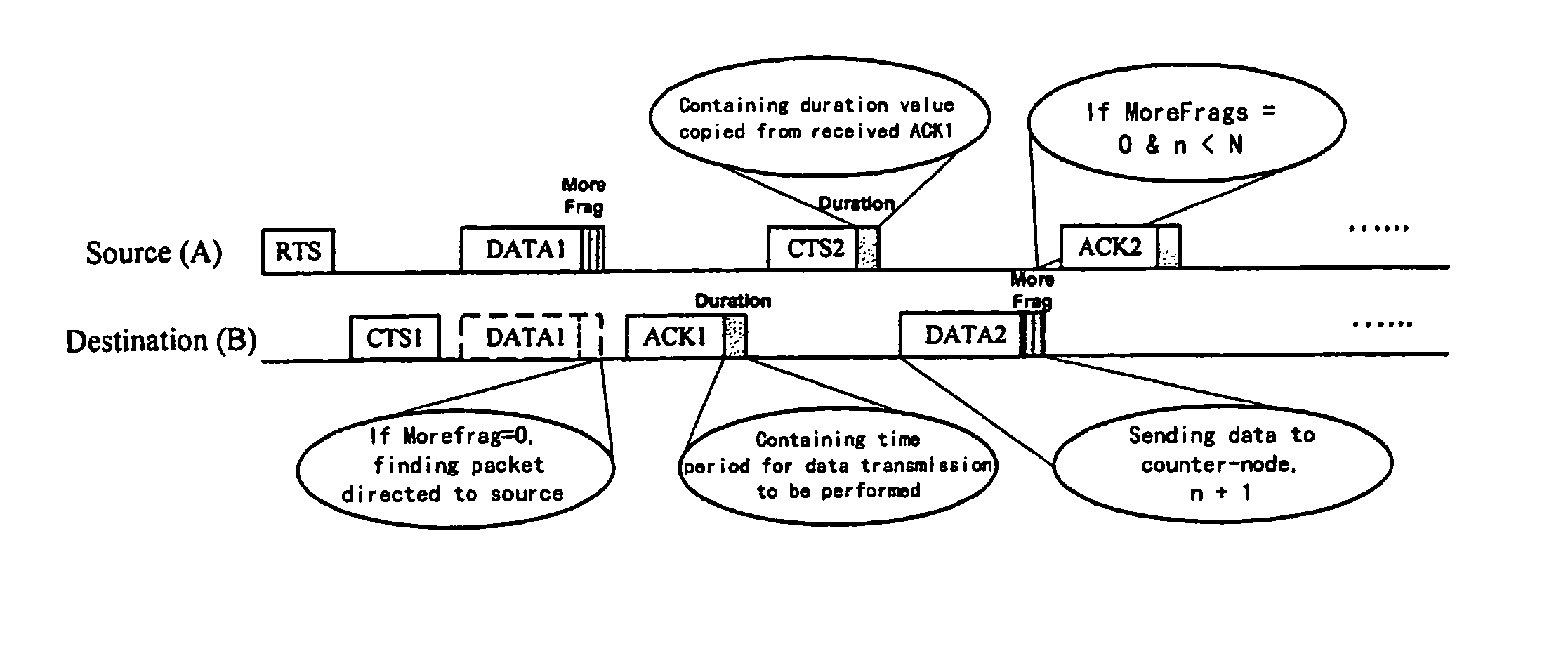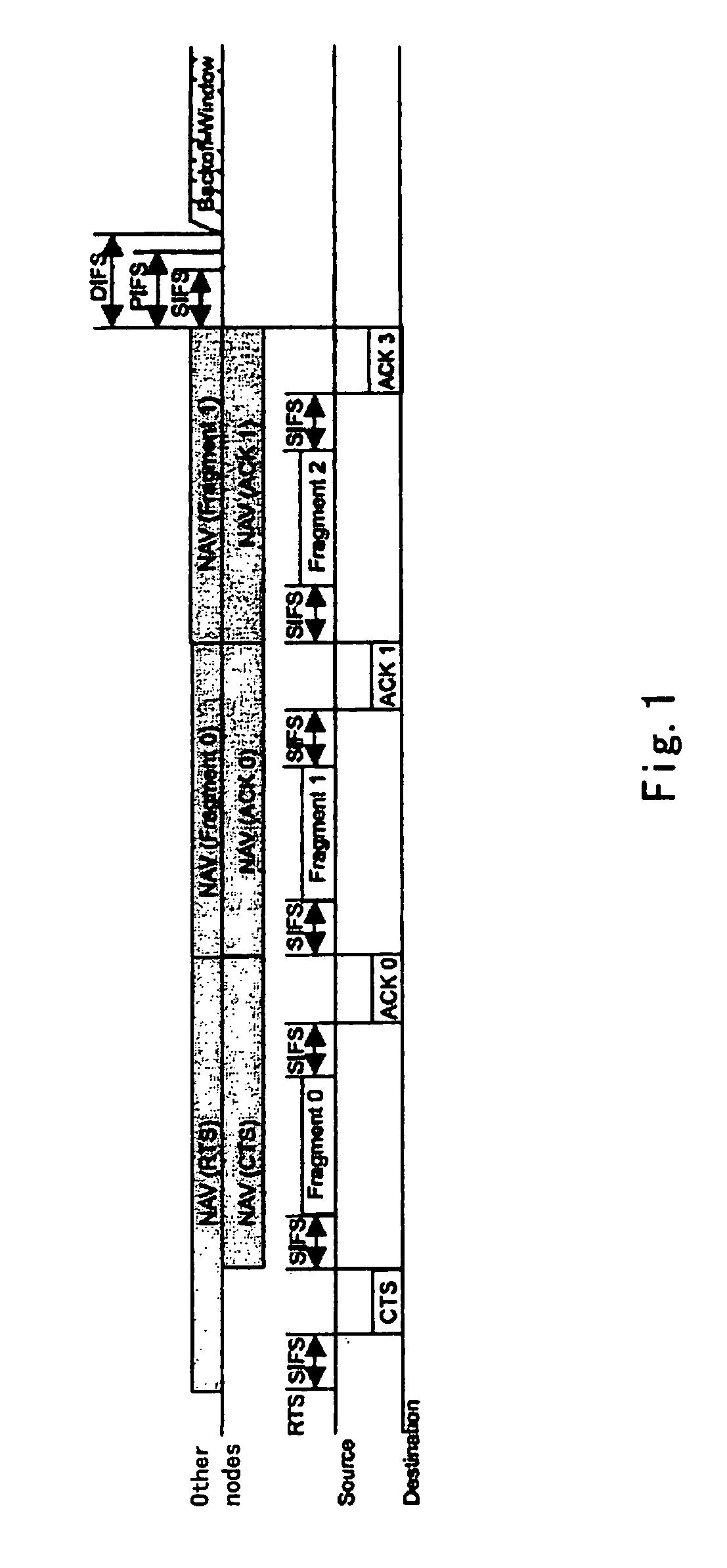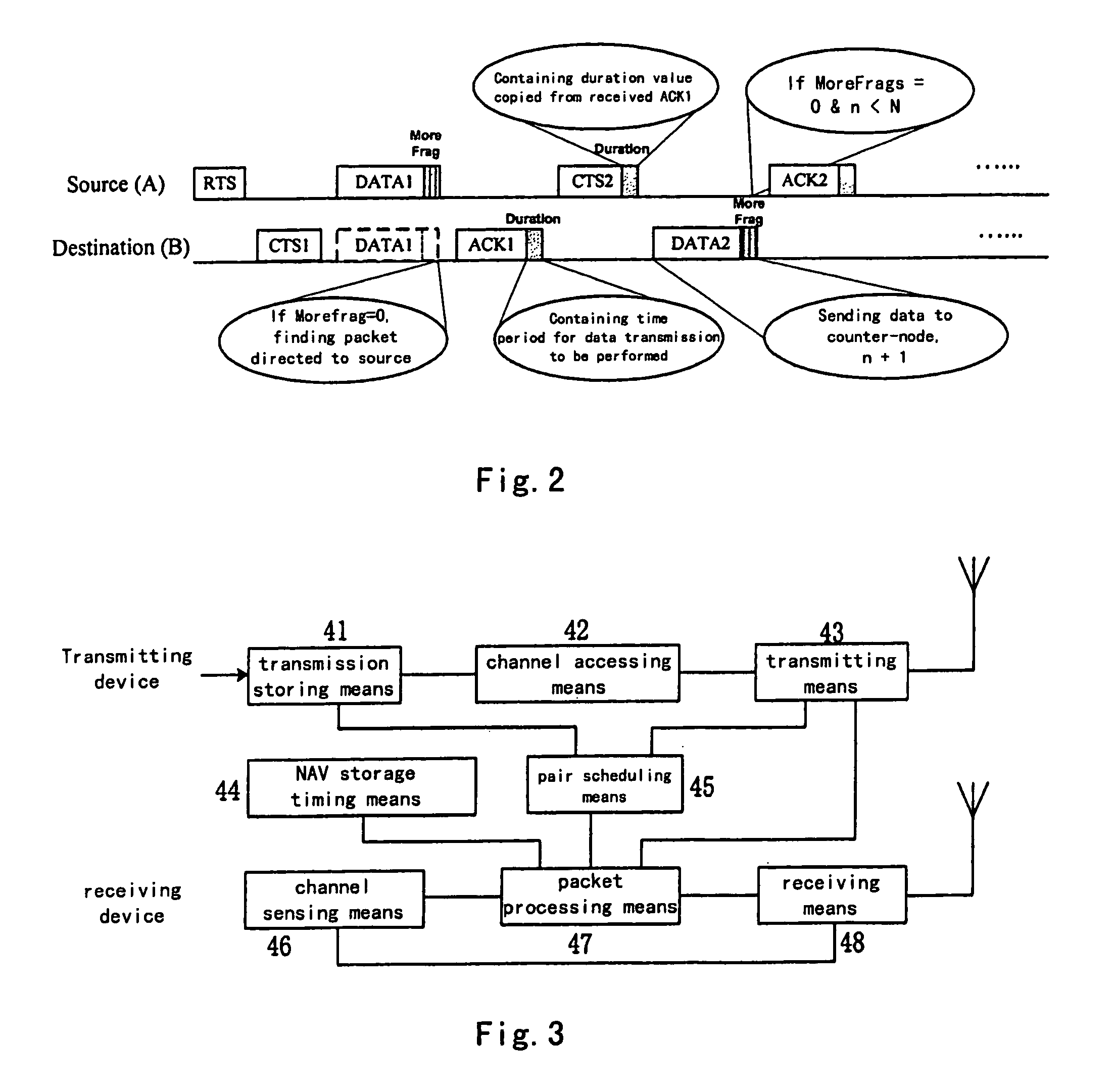Medium access control method and apparatus in wireless distributed network
a wireless distributed network and access control technology, applied in the field of wireless distributed network access control methods and apparatuses, can solve the problems of limited communication, increased randomness of resource sharing, and inability to work with mobile communication techniques
- Summary
- Abstract
- Description
- Claims
- Application Information
AI Technical Summary
Benefits of technology
Problems solved by technology
Method used
Image
Examples
Embodiment Construction
[0030] The present invention introduces the idea of centralized medium access control methods into the wireless distributed networks. That is, some nodes use known information to schedule the transmissions of other nodes in order to avoid the independent contention of channels of each node, to better utilize the channel resources, and not to affect the operation and hardware implementation of the system. Simultaneously, by considering the backward compatibility of the scheme, the present invention is based on the wide-accepted 802.11 protocol, and practices more effective channel utilization without any increase of hardware overhead.
[0031] Embodiments of the present invention include a medium access control method and device in a wireless distributed network, after one pair of nodes successfully win a channel, this method and device can use one party of the current transmission pair to schedule the packet transmission of the other party, in order to make both of them immediately tr...
PUM
 Login to View More
Login to View More Abstract
Description
Claims
Application Information
 Login to View More
Login to View More - R&D
- Intellectual Property
- Life Sciences
- Materials
- Tech Scout
- Unparalleled Data Quality
- Higher Quality Content
- 60% Fewer Hallucinations
Browse by: Latest US Patents, China's latest patents, Technical Efficacy Thesaurus, Application Domain, Technology Topic, Popular Technical Reports.
© 2025 PatSnap. All rights reserved.Legal|Privacy policy|Modern Slavery Act Transparency Statement|Sitemap|About US| Contact US: help@patsnap.com



